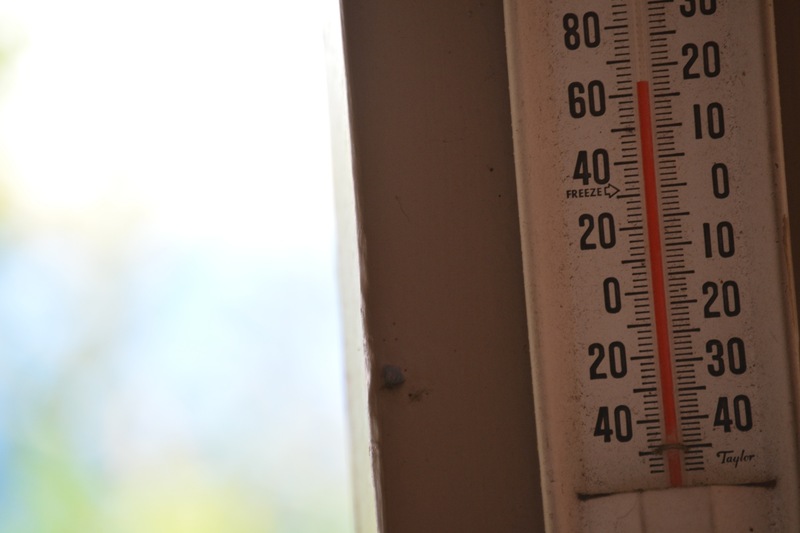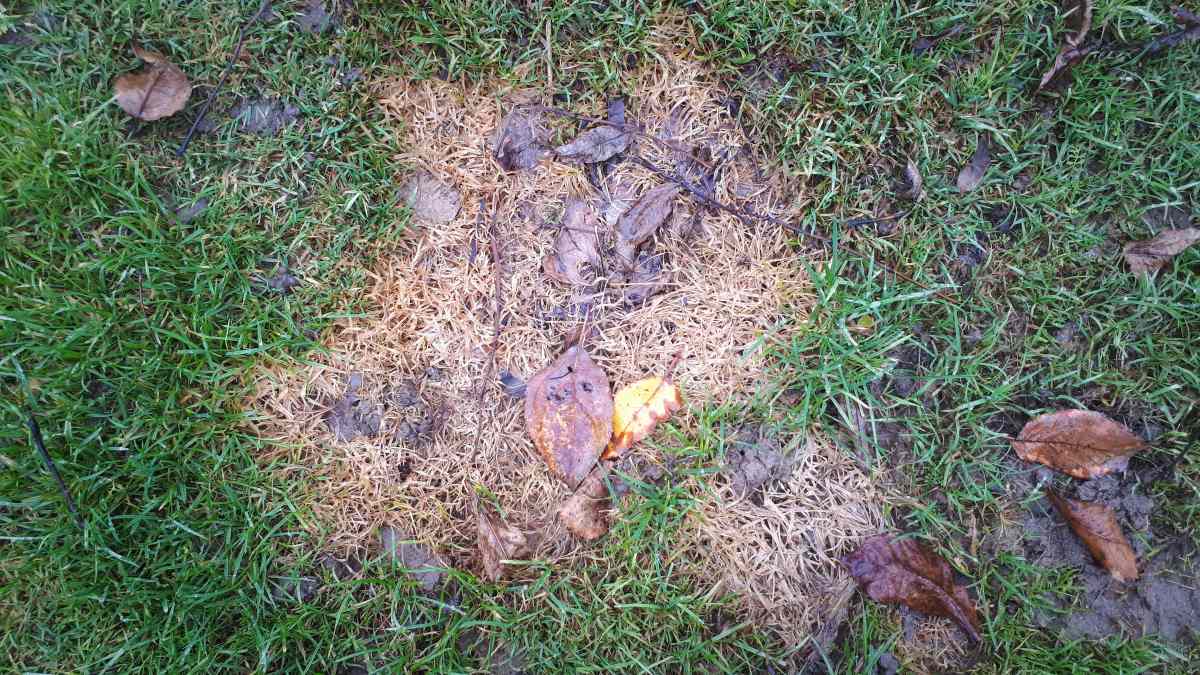
With fall’s chill, your lawn needs less trimming. But when should you stop mowing the lawn before winter? Perform the last mow of the season when the grass stops growing, typically when temperatures drop below 50 degrees Fahrenheit.
Mowing during a winter frost is not recommended, so you’ll need to squeeze in the final mow at least one week before the first frost. However, predicting the first frost is challenging. That’s why you should observe when the grass stops growing, and the 50-degree Fahrenheit guideline is a helpful indicator. In short, all of these elements – the first frost, grass growth, and temperature – are interconnected.
Let’s take a closer look at when to stop mowing and some tips for protecting your grass during cold months.
Factors That Influence the Last Mow
Grass Growth

Pay attention to your lawn – it communicates through its growth pattern. If it’s still growing actively, then keep mowing regardless of the calendar date.
Temperature

Now, the question is, when does grass stop growing? A simple guideline is that once temperatures have dropped below 50 degrees Fahrenheit, your lawn has most likely stopped growing.
However, some grasses will stop growing even sooner. Warm-season grasses, for instance, stop growing once temperatures drop below 60 degrees Fahrenheit.
- Cool-Season Grasses: Often seen in the northern regions, cool-season grasses tend to slow down their growth once daytime air temperatures consistently dip below 50 to 55 degrees Fahrenheit, around late October or early November.
- Warm-Season Grasses: Warm-season grass types have slightly different timelines due to their fondness for warmer regions. Usually, warm-season grasses stop growing once daytime air temperatures consistently dip below 60 degrees Fahrenheit, often around early or mid-October.
The First Frost

Once your grass has stopped growing and the temperatures have dropped, do not delay the last mow. Perform the last mow at least one week before the first frost is predicted. Don’t leave everything until the very last moment. Stay ahead of the weather forecast and plan your mowing session accordingly.
Pro Tips:
- An easy visual cue to help guide this timing is looking at the trees in your yard. Generally, when all the leaves have fallen, it often signals that your lawn is entering its dormancy period and is ready for a good final trim.
- You can check the expected first frost dates on the National Centers for Environmental Information website. They offer a Historical Date of First Freeze: Median Date map for all states, making it easy to determine the perfect time for your final mow.
Factors That Might Affect the Timing the Last Mow
Is your grass still growing, even in sub-50-degree weather? Apart from grass type and temperatures, elements like nutrients in your soil or sunlight exposure may be extending its growth. Hence, the wait for the season’s final mowing might be a bit longer than expected.
Some of these factors include:
- Lawn Health and Fertility: If you’ve put a lot of effort into maintaining your lawn health throughout the year with proper fertilizing, watering, and pest control practices, it may stay green and grow for longer.
- Recent Rainfall: Substantial rainfall can stimulate growth in cooler weather. So, if there’s abundant rain during the autumn months, grass might need to be mowed even if temperatures have dipped below 50 degrees Fahrenheit.
- Microclimate: The unique climate conditions in your specific yard’s turf areas could potentially prolong or shorten your lawn’s growing period. Aspects like sun exposure duration, shade levels from structures or trees, wind protection, or soil depth could affect how long you need to keep mowing.
Proper Final Mowing Height
The goal of your final mow is to cut your lawn short without scalping it. So, it’s all about striking a balance.
But how low should you mow before winter? It depends on who you ask. Some experts recommend a shorter cut than usual, while others recommend cutting at the normal height.
Here’s a good rule of thumb: Prioritize proper mowing practices. Cut your grass short without going below the turf type’s recommended height and without removing more than one-third of the grass blade. Cut it short, but don’t sacrifice your turf’s health.
If you don’t know your turf type’s recommended mowing height, visit our guides for cool-season grass care and warm-season grass care.
Additional Lawn Care Tasks to Prepare for Winter

Your lawn requires a little more than the last mow before it’s ready to settle in for winter. Here are some additional steps you can take to help your lawn survive the cold months and wake up beautifully when spring returns:
- Remove leaves and debris to allow sunlight to reach the grass, prevent disease, and protect your lawn’s health during winter.
- Aerate cool-season turf to relieve soil compaction before the ground freezes. (Here is our guide on How to Aerate a Lawn)
- Overseed cool-season grass to fill in bare or thin areas of turf. (For tips on this, check out our guide How to Overseed a Lawn in 8 Simple Steps)
- Spot-treat perennial weeds that are still actively growing. (Our Guide to Weed Control in Your Yard article can help you to get rid of these intruders.)
Pro Tip: Before calling it a season, rather than just shoving your mower to the corner of your garage, give it a good cleaning (and an oil change if needed). Thinly coat any existing rust spots with oil and sharpen the blades to ensure a crisp cut when spring rolls around again.
Check out our article How to Winterize Your Lawn for a more comprehensive walkthrough of the above steps.
FAQ About the Final Lawn Mow Before Winter
Is it better to pick up leaves or mow them?
Regarding leaves, many professionals suggest mulching them when mowing instead of picking them up. This returns essential nutrients back into the soil enhancing its fertility over time.
However, if there’s a thick layer that could smother the turf underneath or create a wet mat welcoming diseases, then yes, rake them up.
Is it okay to leave grass clippings on the lawn before winter?
Leaving lawn clippings on your lawn contributes as a natural fertilizer by returning nutrients to the soil. It is typically best to leave them on through summer and into early, but as you approach winter with the final mows of the season, it’s a good idea to bag or rake up those clippings.
As with mulching leaves, wet clippings left on the lawn over winter can create wet spots that breed diseases.
Can mowing wet grass damage it?
Mowing wet grass can harm it as the blades won’t cut cleanly, potentially causing disease. It can also clump under the mower deck, clog it, and leave tire marks on a soft lawn. Wait for your lawn to dry before mowing.
Hire a Pro for the Final Mow
Taking care of your final lawn mow before winter isn’t as challenging as it may first appear, despite the various things to keep in mind. The key is not to make rash decisions based on what day or month it is but to pay heed to factors like grass type, weather conditions, and lawn health.
If you’re unsure about the precise timing, your best bet would be to hire a local lawn care pro. They can manage your last mow, ensuring a healthy comeback for your grass after winter.
Main Photo Credit: ValeriaLu / Pixabay




